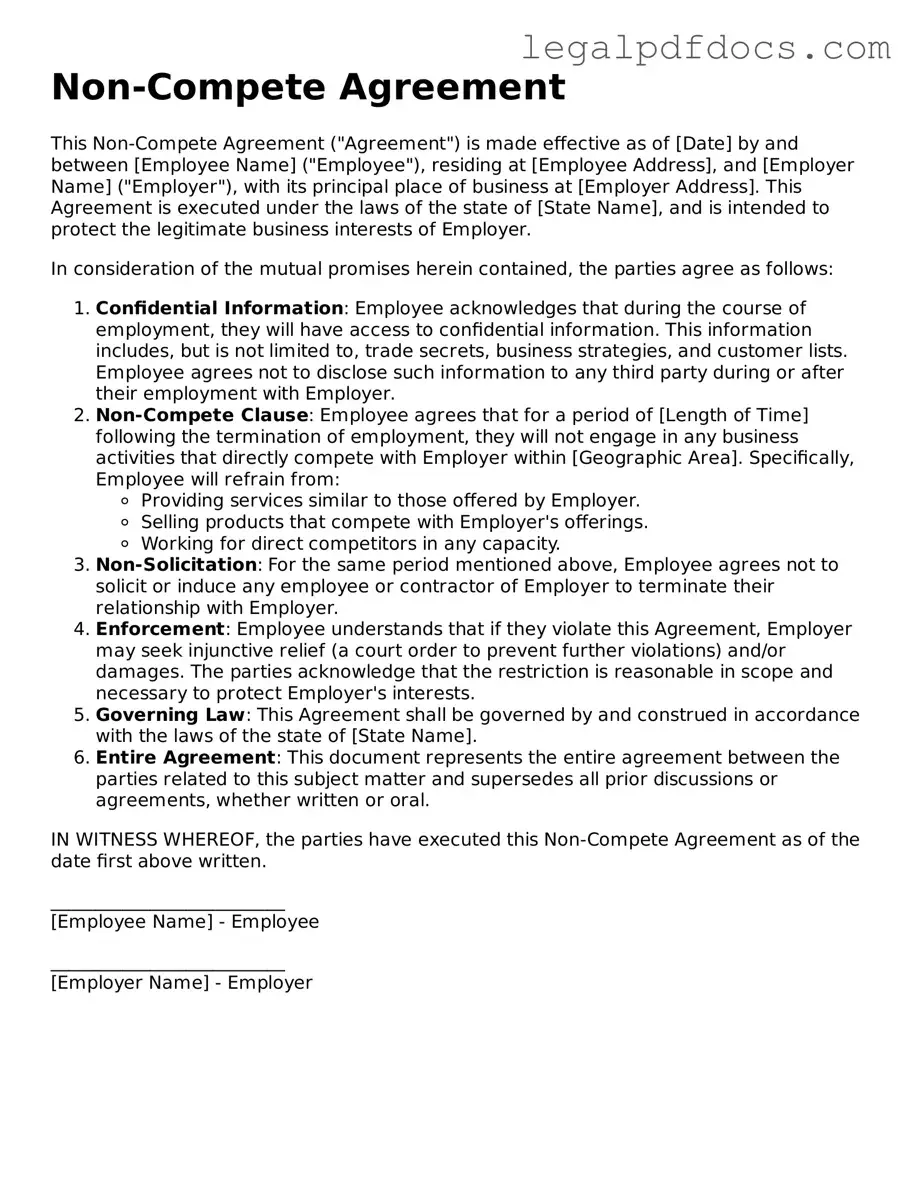Non-compete Agreement Template
A Non-compete Agreement is a legal document designed to restrict an employee's ability to engage in business activities that compete with their employer after leaving the company. This form aims to protect a business's confidential information and client relationships. To ensure your interests are safeguarded, consider filling out the Non-compete Agreement form by clicking the button below.
Open Non-compete Agreement Editor Here
